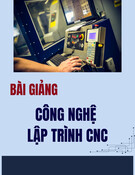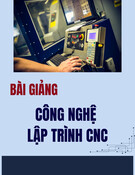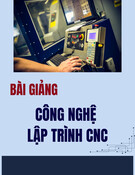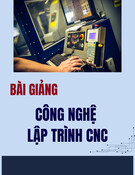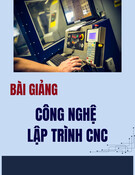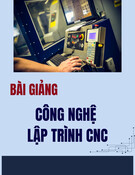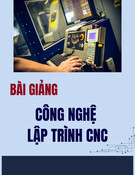
* Corresponding author.
E-mail address: t.alam@psau.edu.sa (T. Alam)
© 2019 by the authors; licensee Growing Science, Canada.
doi: 10.5267/j.dsl.2019.2.001
Decision Science Letters 8 (2019) 249–260
Contents lists available at GrowingScience
Decision Science Letters
homepage: www.GrowingScience.com/dsl
Forecasting exports and imports through artificial neural network and autoregressive
integrated moving average
Teg Alama*
Kingdom of Saudi Arabia, College of Business Administration, Prince Sattam bin Abdulaziz University, Al Kharj
a
C H R O N I C L E A B S T R A C T
Article history:
Received January 2, 2019
Received in revised format:
January 28, 2019
Accepted February 14, 2019
Available online
February 14, 2019
Nowadays, Saudi government has established several strategic tactics such as Saudi Vision 2030
to predict the future of the country. In order to accomplish a superior growth in the economy of
the country, mathematical model and forecasting techniques are important tools. In this study,
total annual exports and imports of the Kingdom of Saudi Arabia are forecasted using Artificial
Neural Network (ANN) and Autoregressive Integrated Moving Average (ARIMA) models. This
paper tries to predict a time series data using ANN and ARIMA models on total annual exports
and imports of Kingdom of Saudi Arabia from the year 1968 to the year 2017 with the help of
statistical software XLSTAT. The applied models are used to predict some future values of total
annual exports and imports of the Kingdom of Saudi Arabia. It is found that the ANN and
ARIMA (1, 1, 2) and ARIMA (0, 1, 1) models are suitable for predicting the total annual exports
and imports of the Kingdom of Saudi Arabia.
.ence, Canada2018 by the authors; licensee Growing Sci©
Keywords:
Artificial Neural Networks (ANN)
Autoregressive Integrated Moving
Average (ARIMA)
Forecasting
Export and Import
Kingdom of Saudi Arabia
1. Introduction
The Kingdom of Saudi Arabia preserves the largest amount of export of petroleum and it has the
second-largest proven petroleum and the fifth-largest proven natural gas reserves in the world. The
economy of the country depends primarily on oil and gas products. Saudi Arabia exported SAR
611.48B and imported SAR491.43B in 2016, yielding a positive trade balance of SAR 119.29B. The
growth domestic product (GDP) of Saudi Arabia was SAR 2423.40B and its GDP per capita was SAR
204.08K.
2. Methods and Materials
2.1 Artificial Neural Network
Artificial Neural Network (ANN) is a well-organized data mining technique which is achieved from a
biological neural networks. ANN collects a large amount of data interconnected in some specific
patterns to help communication among various units normally called nodes or neurons and each of
these is joint with other neurons through some connection links. Each association is joint with a
particular weight, which gives some feedback about the input data. This is an essential part of neurons

250
to come up with a particular problem. Each neuron maintains a combined state or an activation signal.
Output signals, produced after joining the input signals and activation rule, are dispatched to other
units.Some important developments of ANN are given in Table 1.
Table 1
Some Important Development s of ANN
Year Author Development
1943 Warren McCulloch and Walter
Pitts
Physiologist, and mathematician’s ideas are used for ANN purposes
1956 Taylor An associative memory network
1964 Taylor Winner-take-all circuit with association with output units
1969 Minsky and Papert Multilayer perceptron concept
1971 Kohonen Associative memories
1986 Rumelhart, Hinton, and Williams Generalised Delta Rule
1988 Kosko A hybrid of Binary Associative Memory and Fuzzy Logic ANN
2.1.1. Basic Model of Artificial Neural Network
An ANN mode can be expressed in Fig. 1 as follows,
x1 W1
x2
Σ yin ϝ
Y
Inputs . W2 Output
.
. Activation function
xm Wm
Fig. 1. Neural Network
Any ANN configuration can be computed as
1
.
m
in i i
i
ywx
The output is measured using the function (Y)
based on the net input (F(yin)). ANN has been wiedly used for predicting different incidennts (Gaida
et al., 2017; Kotur & Žarković, 2016; Sözen et al., 2011; Deng, 2010; Tektaş, 2010). Kavaklioglu et
al. (2009) applied ANN method to estimazte the electricity consumption using the historical data over
the period 1976-2006. Ardakani and Ardehali (2014a,b) used ANN for prediction of electrical energy
consumption for some countires. Li et al. (2007) applied ANN for estimating crop yield and compared
their results with multivariate regression (Chamberlain, 1982). Zeng et al. (2017) implemented
enhanced back-propagation for energy consumption predicting using neural network. Sokolov-
Mladenović et al. (2016) estimated economic growth using ANN with a learning system based on
trade, import and export parameters. Kankal and Uzlu (2017) applied ANN with a metaheuristics
method to forecast demand for electricity. Tsai and Huang (2017) applied ANN for forecasting
container flows among some Asian ports. According to Aydin et al. (2016), some of the world’s largest
energy consumer (HC) consume approximately 62% of the world energy consumption. Thus, it is
essential to find a predicted the future of world energy consumption. They proposed an ANN based
model for HCs’ energy consumptions. Olgun et al. (2012) applied ANN for predicting the demand of
natural gas in Turkey and comparted their results with support vector machines (Joachims, 1998;
Uddin, 2009; Hsu & Lin, 2002; Chang & Lin, 2011). Liu et al. (2017) applied ANN to forecast the
Chinese energy consumption. Mollaiy-Berneti (2015) used a hybrid of ANN based on the back-
propagation (BP) type neural network and some methaheuristics. The method offered some advantage
over the local search capabilities of BP technique and some search capability of some metaheuristics
algorithm. Panda et al. (2010) used ANN method for the prediction of the agricultural crop yield

T. Alam / Decision Science Letters 8 (2019)
251
prediction. This paper uses ANN technique to estimate the import and export of the Kingdom of Saudi
Arabia.
2.1.2. Auto-Regressive Integrated Moving Average (ARIMA)
The early time series are concentrated on stochastic processes by Walker (1931). Udny Yule (1927)
and Wold (1938) are among the first who introduced Autoregressive Moving Average (ARMA) models
for time series, but was not able to determine the likelihood function for maximum likelihood (ML)
estimation of the parameters (Ljung & Box, 1978). Then Box and Jenkins (Box et al., 2015) developed
their methods for time series for forecasting purposes. Today, most important tools based on Box-
Jenkins models (Kendall, 1995; Olajide et al., 2012) are commonly used for forecasting. ARIMA
models are the most comprehensive times series for forecasting purposes. The linear type ARIMA
model is considered as a primary forecasting one for a stationary data where the predictors includes
of lags of the dependent variable and/or lags of the forecast errors. A typical ARIMA model is stated
as an ‘ARIMA (p, d, q)’ model.
where,
p represents the number of the autoregressive terms,
d denotes the number of non-seasonal differences required for stationarity
q is associated with the number of lagged prediction errors in the forecasted equation.
Let y denote the dth difference of Y, then, the ARIMA can be stated as follows,
If d=0: yt = Yt
If d=1: yt = Yt - Yt-1
If d=2: yt = (Yt - Yt-1) - (Yt-1 - Yt-2) = Yt - 2Yt-1 + Yt-2
and a general forecasting is formulated as follows,
ŷt = μ + ϕ1 yt-1 +…+ ϕp yt-p - θ1et-1 -…- θqet-q.
Here the moving average parameters (θ’s) are defined so that their signs are negative in the equation,
following the convention introduced by Box and Jenkins. Various ARIMA models that are commonly
encountered are given in Table 2.
Table 2
Various ARIMA models
ARIMA(1,0,0) First-order autoregressive model Ŷt = μ + ϕ1Yt-1
ARIMA(0,1,0) Random walk Ŷt = μ + Yt-1
ARIMA(1,1,0) Differenced first-order autoregressive model Ŷt = μ + Yt-1 + ϕ1 (Yt-1 - Yt-2)
ARIMA(0,1,1) Without
constant Simple exponential smoothing Ŷt = Yt-1 - (1-α) et-1 = Yt-1 - θ1et-1
ARIMA(0,1,1) With
constant Simple exponential smoothing with growth Ŷt = μ + Yt-1 - θ1et-1
ARIMA(0,2,1) Without
constant Linear exponential smoothing: Ŷt = 2 Yt-1 - Yt-2 - θ1et-1 - θ2et-2
ARIMA(1,1,2) Without
constant - Damped-trend linear exponential smoothing Ŷt = Yt-1 + ϕ1 (Yt-1 - Yt-2 ) - θ1et-1 - θ1et-1
ARIMA method has been extensively used for forecasting method (Montanari et al., 1997; Reikard,
2009). Valipour et al. (2013) in a novel work compared ARIMA, and artificial neural network for
predicting the inflow of Dez dam reservoir using the monthly discharges from 1960 to 2007. They
compared root mean square error and mean bias error and reported that their propsoed ANN was the

252
best model for inflow prediction of the Dez dam reservoir. Khashei and Bijari (2010) used an ANN
model for forecasting purposes and compared their results with ARIMA method. Khashei and Bijari
(2011) in other assignment presented a hybridization of ANN and ARIMA models for time series
forecasting. Pedro and Coimbra (2012) made an assessment using prediction technique such as
ARIMA), k-Nearest-Neighbors (kNNs), Artificial Neural Networks (ANNs), and ANNs optimized by
Genetic Algorithms (GAs/ANN) for solar power production with no exogenous inputs. Wang et al.
(2015) implemented ARIMA for improving forecasting accuracy of annual runoff time series. Kazem
et al. (2013) applied support vector regression with chaos-based firefly algorithm (Feng et al., 2013)
for stock market price forecasting. Liu et al. (2014) used genetic algorithm for short-term wind speed
forecasting.
In this survey, we have accomplished a survey on forecasting methods and the frequencies of the words
used in Web of Science database. There are approximately 700 research works published and indexed
in this database and Fig. 2 demonstrates the frequencis of the words used in research areas that use
forecasting.
Fig. 2. The frequency of the keywords used in research topics with ARIMA and ANN
According to Fig. 2, ANN and ARIMA have been extensively used in forecasting techniques. When
co-word analysis is implemented for scientometrics purposes, we apply clusters of keywords and their
interconnections and the clusters are addressed as themes. Each theme obtained here is specified in
terms of two perspectives; namely “density” and “centrality” and some basic statistics for density and
centrality are implemented for classification of the themes into various groups. In a theme, the
keywords and their intercorrelations draw a network graph, called a “thematic network” where
“centrality” is considered as the horizontal axis and “density” is taken into account as the vertical axis.
In a network, if there is a big correlation from one node with other nodes, we consdier a higher centrality
for it and it is considered as an important part in the network. Centrality is thus implemented to measure
the correction degree among various topics. Thematic map is a kind of plot which makes it possible to
analyze themes based on the quadrant in which they are placed. Themes in the upper-right quadrant are
both well developed and important for the structuring of a research field such as “big data” and “big
data analytics”. Themes in the upper-left quadrant have well developed internal ties but unimportant
external ties and so are of only marginal importance for the field such as “social network”. Themes in

T. Alam / Decision Science Letters 8 (2019)
253
the lower-left quadrant are both “weakly developed and marginal”, mainly representing either emerging
or disappearing. Themes in the lower-right quadrant are “important for a research field but are not
developed”, so this quadrant groups transversal and general, basic themes such as “ARIMA” and
“ANN” (See Fig. 3) (Esfahani et al., 2019; Salimi et al., 2019; Alavi et al., 2019; Gilani et al., 2019;
Pourkhani et al., 2019; Tayebi et al., 2019; Javid et al., 2019).
Fig. 3. Thematic Map
Next, we present the results of the implementation of ARIMA and ANN methods.
3. Result and Findings
3.1.Data
The data regarding the total annual exports and imports of the Kngdom was collected from Saudi
Arabian Monetary Authority (SAMA). The information were on yearly basis and in Saudi Arabian
Riyal (SAR) from years 1968 to 2017. The summary statistics for exports and imports data of the
Kingdom are given below in the Table 3 by using Software XLSAT.
Table 3
Summary Statistics of Export and Imports of the Kingdom
Variable Observations Minimum Maximum Mean Std. deviation
Exports 50 9118.000 1456502.000 384270.267 407367.661
Imports 50 2578.000 655033.364 181662.394 189268.157

![Tài liệu huấn luyện An toàn lao động ngành Hàn điện, Hàn hơi [chuẩn nhất]](https://cdn.tailieu.vn/images/document/thumbnail/2025/20250925/kimphuong1001/135x160/93631758785751.jpg)

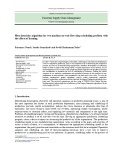
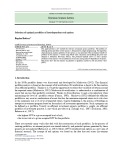
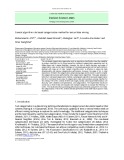
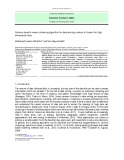
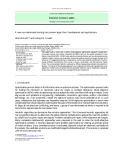
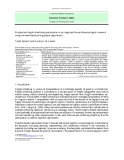
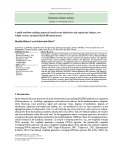
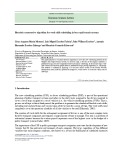


![Bài tập tối ưu trong gia công cắt gọt [kèm lời giải chi tiết]](https://cdn.tailieu.vn/images/document/thumbnail/2025/20251129/dinhd8055/135x160/26351764558606.jpg)




